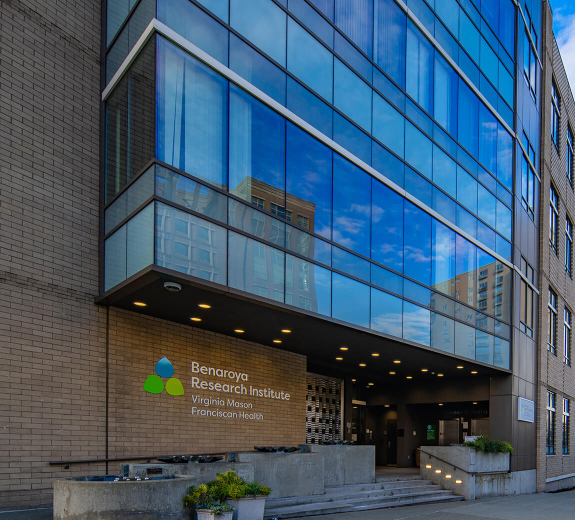When some people are diagnosed with type 1 diabetes (T1D), the disease progresses so quickly that their pancreas stops making insulin within a year. For others, the process is slower and this can make their T1D easier to manage. But what if we could identify these "fast progressors" early, and match them with treatments that help them stay much healthier for much longer?
Alice Long, PhD, and her colleagues at Benaroya Research Institute at Virginia Mason (BRI) have made a discovery that marks key progress towards this goal and opens the door to potential new treatment strategies.
In a paper recently published in Journal of Clinical Investigation, BRI researchers are among the first to identify important differences between fast progressors and people whose disease progresses much more slowly. For example, Dr. Long’s team showed that slow progressors have higher levels of exhausted CD8 T cells – cells that are worn out from attacking the pancreas. The discovery could lead to a test that identifies how quickly individual patients will lose their ability to make insulin.
"It brings us one step closer to being able to tell someone ‘you’re a fast progressor,’" says Dr. Long, a BRI principal investigator. "Doctors may then be able to give a therapy that’s going to slow down the attacker cells or maybe even stop them. For such people with T1D, that would prolong their ability to make insulin, which makes their lives much easier and significantly reduces their long-term health risks."
Unprecedented Data on Attacker Cells
To study the differences between fast and slow progressors, Dr. Long’s team started by using tetramer technology as a molecular magnet to find CD8 T cells in each population. These cells attack the pancreas and eventually destroy its ability to produce insulin.
"It’s tricky to find these cells because there is only about 1 of them in every 10,000 white blood cells," Dr. Long says.
Then Peter Linsley, PhD, led BRI’s bioinformatics team in helping Dr. Long’s lab analyze an unprecedented amount of data from these cells. Researchers are typically only able to look at two or three aspects of each cell. Dr. Linsley’s team used innovative technology to help Dr. Long and her colleagues collect and analyze data on up to 30 aspects of each cell.
"This research required a team of people who think about science in different ways – there’s no way we could have done this without everyone’s input," Dr. Long says.
Knowing When T1D Will Move Quickly
This teamwork enabled the researchers to be the first to identify important subpopulations of CD8 T cells, and to discover that fast progressors have relatively few exhausted CD8 T cells.
"These exhausted cells are just what they sound like — they’ve been trying so hard to attack the pancreas that they get tired and say ‘nope, we’re not doing that today,’" Dr. Long says. "That’s good because it means they leave the pancreas alone, so it can function."
Dr. Long envisions doctors someday using a test to determine how many exhausted CD8 T cells are in a T1D patient’s blood. If the patient doesn’t have many of these cells, the doctor could know they’re a fast progressor, and match them with therapies that might slow their disease.
"There are already a number of therapies in clinical trials that could potentially prolong the body’s ability to make insulin," Dr. Long says. "Making even a little natural insulin can prevent or delay some of T1D’s long-term complications."
Pursuing Innovative Treatments
The research also sets the stage for new T1D treatments.
For instance, Dr. Long and her colleagues showed that fast progressors have a higher number of activated memory cells – cells that have recently attacked the cells that make insulin. Dr. Long hopes that studying these cells could reveal unique characteristics, or "markers".
"Those markers could become targets for therapies that destroy the cells and preserve the pancreas," she says.
On another front, Dr. Long has already received funding to investigate why CD8 T cells become exhausted.
"If we can figure out how this process works, it could become possible to design treatments that go in and exhaust attacker cells," she says. "They’d stop causing T1D so people could live longer, healthier lives."



